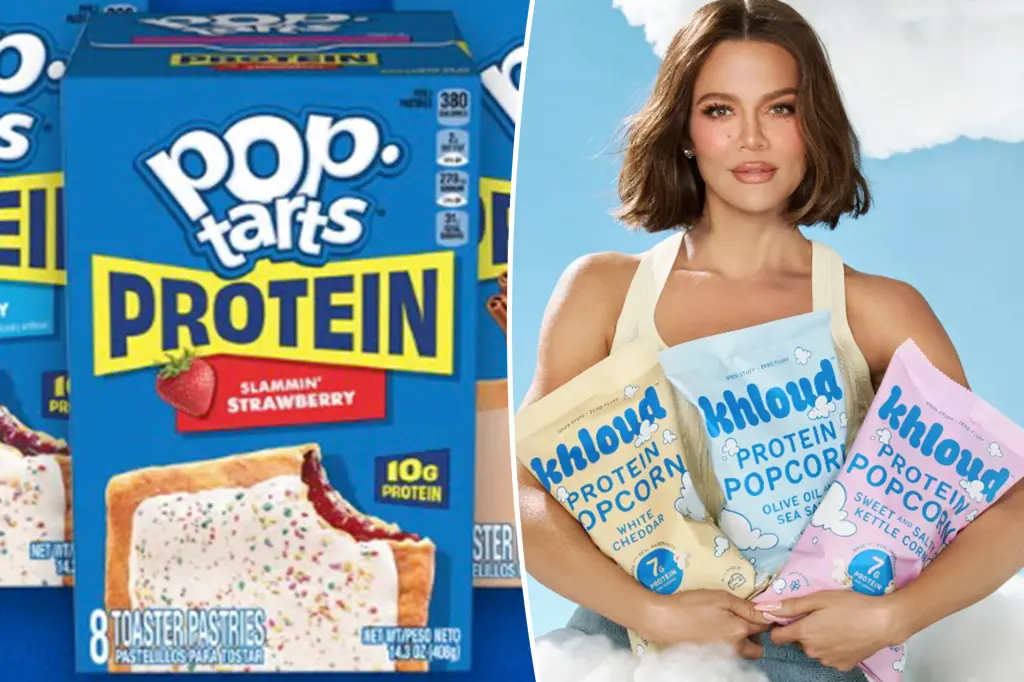The Protein Boom: Are We Taking It Too Far?
In recent years, protein has become the superstar of the nutrition world. We’ve long known about its benefits – increasing fullness, reducing appetite, and building muscle. But the current trend of cramming protein into nearly every food product on the market raises important questions about whether we’ve taken our protein obsession too far. From Starbucks’ protein-boosted beverages to protein-fortified versions of Pop-Tarts and Doritos, the powerhouse nutrient is showing up in places we never expected – or perhaps never needed.
This protein-packing phenomenon has transformed the food landscape in surprising ways. Starbucks now offers protein cold foams and lattes with up to 36 grams of protein in a 16-ounce beverage. Kellanova North America (formerly Kellogg’s) is launching protein-enhanced versions of Pop-Tarts in November, doubling the original protein content by adding wheat and milk protein concentrates to the ingredients. Even PepsiCo has announced a new line of “protein-packed” Doritos, attempting to bridge the gap between gym enthusiasts and snack lovers. Perhaps most surprisingly, products already naturally high in protein – like Skippy peanut butter – have received additional protein boosts, increasing from 7 grams to 10 grams per two tablespoons in their new “Blended with Plant Protein” variety.
The protein trend extends beyond traditional food categories into unexpected territory. Water, the most basic of beverages, hasn’t escaped the protein revolution – Isopure Protein Water offers 15 grams per bottle, while PepsiCo’s upcoming Propel Protein Water will contain 20 grams of whey protein. Even candy has joined the movement, with protein-enhanced gummies, chocolate, marshmallows, and taffy giving consumers a way to indulge their sweet tooth while feeling virtuous about their protein intake. Breakfast cereals were early adopters of the trend, with protein-supplemented versions of Special K, Kashi, Wheaties, and Cheerios providing a nostalgic taste with added nutritional claims. Even comfort foods like mac and cheese have received protein makeovers, with brands like Muscle Mac packing an impressive 40 grams of protein in a single box.
While this protein-everywhere approach might seem beneficial at first glance, nutrition experts caution consumers to look beyond the marketing. Jessica Crandall, a registered dietitian nutritionist and medical adviser at FuturHealth, warns that it’s easy to be deceived by high-protein nutrition labels, causing people to perceive unhealthy products as nutritious. “A lot of foods out there marketed as ‘protein-packed’ are still highly processed and loaded with added sugar, sodium or artificial ingredients that can ultimately sabotage whatever benefits the protein might offer,” she explained. This creates a nutritional paradox where the added protein serves more as a marketing tool than a meaningful health benefit, potentially leading consumers to choose these processed foods over naturally protein-rich whole foods.
Celebrity nutritionist Dr. Daryl Gioffre echoes these concerns, pointing out that many protein-enhanced products come with significant nutritional baggage. “These foods are loaded with inflammatory seed oils, artificial dyes and refined sugars designed to hit your brain’s bliss point and keep you addicted,” he cautioned. Instead of relying on processed protein-enhanced products, Gioffre recommends cleaner protein sources like grass-fed steak, wild-caught salmon, and raw nuts and seeds that don’t come packaged with “toxic, inflammatory stuff.” The contrast between naturally occurring protein in whole foods versus protein added to ultra-processed foods represents a fundamental nutritional divide that many consumers may overlook when making purchasing decisions based solely on protein content.
Despite the protein marketing frenzy, it’s important to recognize that most Americans already consume adequate protein through their regular diet, primarily from meat, poultry, and eggs. The Recommended Dietary Allowance is just 0.36 grams per pound of body weight – approximately 54 grams daily for a 150-pound person. This relatively modest requirement is easily met through a balanced diet, raising questions about the necessity of protein-fortified junk foods. Moreover, excessive protein consumption isn’t without risks – it can lead to kidney stones, dehydration, and an increased risk of heart disease, especially when the protein comes primarily from animal sources. As with most nutritional advice, moderation and source quality matter more than simply maximizing intake. Perhaps the wisest approach isn’t to seek protein in every product on the shelf but to focus on a balanced diet of minimally processed foods that naturally provide the nutrients our bodies need.















